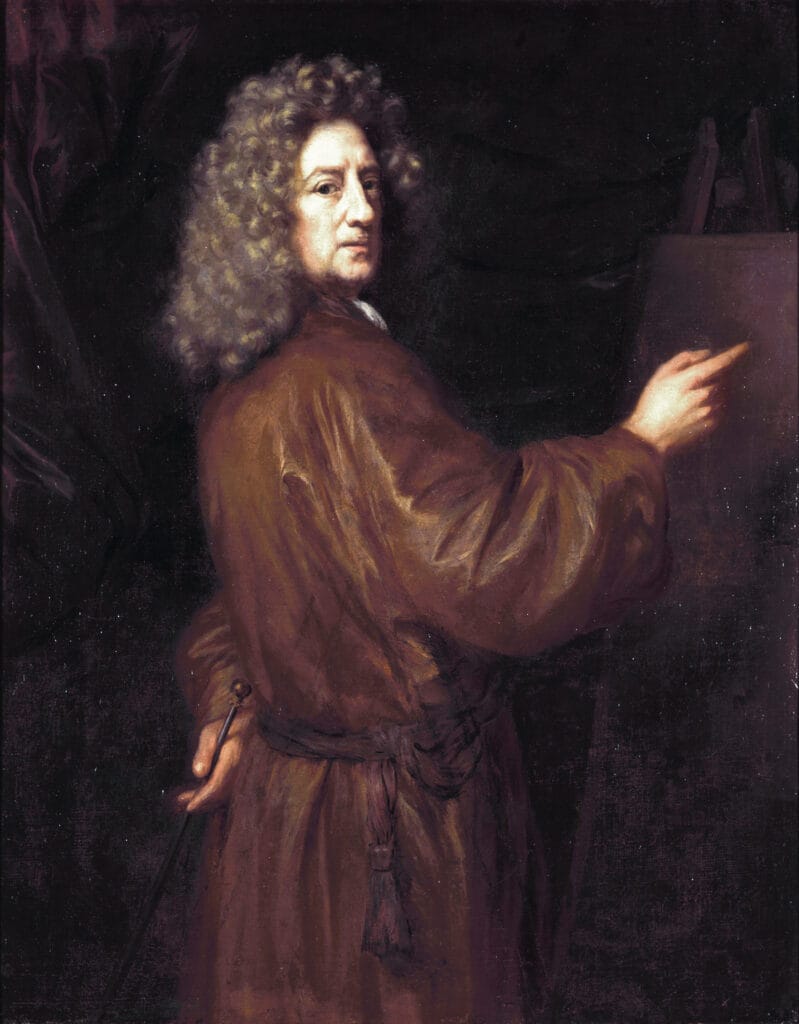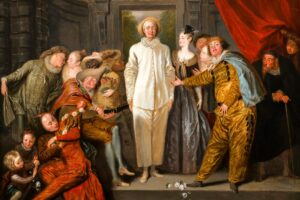The Prayer without End – Nicolaes Maes, 1656
In a quiet corner of a humble Dutch home, a moment unfolds that feels as timeless as breath. Nicolaes Maes, once a student of Rembrandt, captures the sacred in the simple with The Prayer without End, a painting that glows with warmth, humility, and devotion.
The Scene Before Us
At a modest table, an elderly woman sits in solitude. Her eyes are closed, hands folded in deep prayer, lips silent. Before her lies a modest meal: a bowl of porridge, simple bread, cheese, and a jug of ale. The scene is intimate, not staged. Nothing feels arranged for spectacle—it simply is.
Yet, not all is still. On the edge of the white tablecloth, a small kitten tugs, playfully attempting to climb toward the loaf of bread. It’s a humorous touch—subtle, but full of life. It reminds us that even in moments of stillness, the world moves on. Even in reverence, mischief tiptoes near.
The Deeper Meaning
This painting is a hymn to the everyday sacred. The woman prays not in a church, but in her kitchen. Her hands are work-worn, her posture familiar, her clothes plain. The prayer is not formal—it’s lived. It speaks of gratitude for the little she has and the quiet joy of being.
Maes gives reverence to the unseen hours—the ones filled with small rituals, with pauses, with grace. The shelves behind her hold simple objects: books, a candlestick, a spice jar. These are tools of daily life, yet Maes paints them with the same care he gives her face. In this room, everything matters.
And then there’s the cat—adding levity, reminding us that life, even when sacred, is never without interruption. The painting whispers: devotion need not be perfect. Presence is enough.
A Moment Caught in Time
The Prayer without End is less about religion and more about relationship—between a woman and her day, between gratitude and sustenance, between the sacred and the ordinary. Maes invites us to see holiness not in ceremony, but in stillness. Not in grandeur, but in bread, soup, and quiet.
We are left with a sense of peace that lingers—like a prayer that does not end when the eyes open again, but follows us into whatever comes next.
About Artist

Nicolaes Maes (1634–1693) was a Dutch Golden Age painter who, in his long and successful career, shifted from creating intimate, Rembrandt-influenced genre scenes to becoming one of the leading portrait painters of his time. Born in Dordrecht, he was a key figure in the “Dordrecht School” of painting.
Artistic Development
Maes’s career can be divided into two distinct phases. In his early years, he was a student of Rembrandt in Amsterdam, where he absorbed his master’s dramatic use of light and shadow (chiaroscuro). During this period, from around 1653 to 1660, Maes created his most famous genre paintings, which often focused on quiet domestic moments and simple, humble figures. These works are known for their warm tonality, psychological depth, and focus on everyday virtues.
After 1660, Maes’s style underwent a significant change. He began to specialize almost exclusively in portraiture, a more profitable genre. His later portraits, influenced by the fashionable works of Flemish artists like Anthony van Dyck, were more elegant and refined, using lighter colors and a more polished technique to cater to his wealthy clientele.
Notable Works
Maes’s legacy rests on his early genre paintings, which are considered highly inventive and influential.
- “The Eavesdropper” (c. 1656): A prime example of his clever, multi-scene compositions. It shows a mischievous servant on a staircase, eavesdropping on a conversation below, creating a humorous and engaging narrative.
- “The Idle Servant” (c. 1655): A painting that serves as a moralizing commentary. It depicts a mistress discovering her servant sleeping on the job, surrounded by the disorder of her uncompleted tasks.
- “The Prayer without End” (c. 1656): Also known as “Old Woman Saying Grace”, this is one of Maes’s most celebrated works. It depicts an elderly woman, with her hands clasped in prayer, seated at a table with a simple meal. The painting is a beautiful study of devotion and humility. The warm light from an unseen source illuminates her devout face, while in the foreground, a mischievous cat tugs on the tablecloth, creating a contrast between human piety and animal instinct. The quiet dignity and masterful use of light in this work are a clear nod to the influence of his teacher, Rembrandt.



